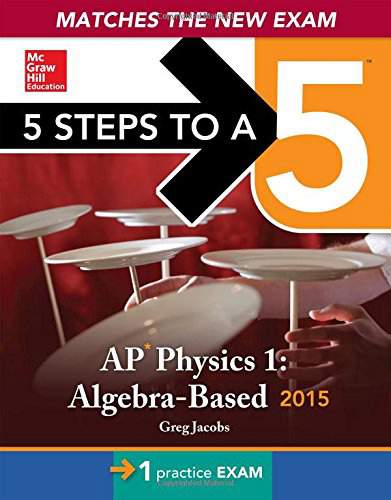Connecting...

This is a quick preview of the lesson. For full access, please Log In or Sign up.
For more information, please see full course syllabus of AP Physics 1 & 2
For more information, please see full course syllabus of AP Physics 1 & 2
AP Physics 1 & 2 Friction
Lecture Description
Up until now we’ve dealt with frictionless surfaces, or ones that don’t have any opposition to an applied force. Friction will become the ‘anti force’ for almost any problem from now on. If something is naturally slowing down or impossible to move, it will be because of friction. Once you get into radial motion you’ll see how friction plays such an imperative part of physics. For now, you just need to understand that friction is the natural force that keeps objects from moving, and that there are two types of friction.
Bookmark & Share
Embed
Share this knowledge with your friends!
Copy & Paste this embed code into your website’s HTML
Please ensure that your website editor is in text mode when you paste the code.(In Wordpress, the mode button is on the top right corner.)
×
- - Allow users to view the embedded video in full-size.
Next Lecture
Previous Lecture










































 Answer Engine
Answer Engine



1 answer
Mon Jun 20, 2016 6:14 AM
Post by Saadman Elman on June 19, 2016
Very helpful indeed! Thanks !
1 answer
Sat Nov 29, 2014 7:17 AM
Post by MOGIN Daniloff on November 28, 2014
Hi, thanks for the great lectures! Based on the myu formula can we say that the greater the normal force the less friction there is. If so then how can this be true? If there is more downward pull it should be harder for an object to move along a surface. Right?
Thank you.
1 answer
Wed Oct 15, 2014 10:22 AM
Post by Caleb Martin on October 15, 2014
How would you find the Force of tension (Ften.) when two objects, one on a table (5.00(kg)) and one hanging down (8.30(kg)) - it's attached to a pulley system (friction-less Pulley) with a coefficient of friction of (0.203) - how would I go about solving this?
1 answer
Wed Jul 23, 2014 8:31 AM
Post by Him Tam on July 22, 2014
Could you explain why the car with tires rolling freely has static friction? Is it because the tires are pushing on the road with a force, and skidding is when it's just like an object that is not pushing with a force on a surface?
4 answers
Mon Jun 2, 2014 11:35 AM
Post by Professor Dan Fullerton on June 2, 2014
That's a different question. The acceleration can be negative. If you call up the positive direction, then the acceleration of the object is -g, or -9.8 m/s^2. Note, however, that g itself is still positive.
You can do the problem the other way as well. If you called down positive, then your acceleration would be +g, or +9.8 m/s^2. You just have to maintain consistency with whatever direction you pick to be your positive y-axis.
5 answers
Mon Jun 2, 2014 11:10 AM
Post by Thivikka Sachithananthan on June 2, 2014
in example 7, why is g= 10? should it be -10 since we denoted up=+?
1 answer
Wed Jun 5, 2013 8:37 PM
Post by Jay Gill on June 5, 2013
Sorry I was adding 20 +10 :(
Brain freeze
2 answers
Last reply by: Saadman Elman
Sun Jun 19, 2016 7:01 PM
Post by Jay Gill on June 5, 2013
Hey Dan,
At 15:59 in video how does Fn= 150N?...Video demonstrates Fn= (20)(10)-50=150N. How does that equal 150N?
Thanks for taking the time to answer my question